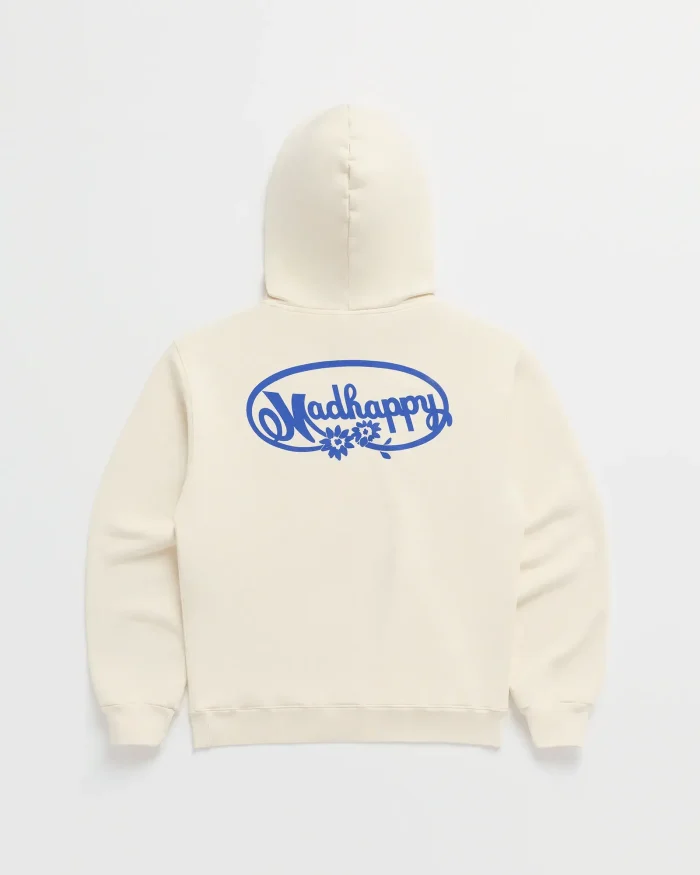More Than Just a Clothing Brand
In a world dominated by fashion labels that emphasize luxury, exclusivity, and fleeting trends, Mad Happy has emerged as a refreshing alternative that intertwines mental wellness with streetwear. Unlike traditional brands that focus solely on aesthetics, Mad Happy promotes a message of optimism, inclusivity, and self-awareness. The brand's success has proven that authenticity and purpose can drive both cultural impact and commercial success. But what exactly is Mad Happy, and why has it resonated so deeply with consumers across the globe?
The Birth of Mad Happy: A Vision for Optimism
Mad Happy was founded in 2017 by four young entrepreneurs: Peiman Raf, Noah Raf, Mason Spector, and Joshua Sitt. Their vision was simple yet powerful: to create a brand that not only sells clothing but also fosters conversations around mental health. The name "Mad Happy" itself is a juxtaposition, symbolizing the complexity of human emotions—where happiness can coexist with struggles, and one’s journey toward mental well-being is never linear.
What started as a passion project quickly gained traction, with their signature pastel-colored hoodies and positive messaging standing out in an industry often driven by exclusivity and hype. By focusing on mental health advocacy, Mad Happy successfully differentiated itself from traditional streetwear brands and cultivated a loyal community of supporters.
Aesthetic Meets Purpose: The Unique Mad Happy Style
One of the reasons Mad Happy has been so successful is its distinctive aesthetic. The brand’s designs are characterized by vibrant pastels, minimalist typography, and comfortable, high-quality fabrics. Unlike the dark and moody tones often associated with streetwear, Mad Happy embraces a softer, more inviting color palette. This visual identity aligns perfectly with its overarching message of optimism and mental wellness.
Beyond aesthetics, the brand also incorporates meaningful messaging in its designs. Hoodies, T-shirts, and sweatpants often feature uplifting quotes, embroidered details, and subtle nods to mental health awareness. These elements make each piece not just a fashion statement, but a conversation starter.
The Mental Health Advocacy Behind Mad Happy
What truly sets Mad Happy apart from other brands is its unwavering commitment to mental health advocacy. From the beginning, the founders aimed to create a company that does more than sell clothing—it sparks meaningful discussions about mental well-being. Through their blog, "The Local Optimist," they share personal stories, expert insights, and resources related to mental health, aiming to break down stigmas and encourage open conversations.
In addition, a portion of Mad Happy’s proceeds goes toward mental health initiatives. The company launched the Mad Happy Foundation, a non-profit organization dedicated to improving mental health resources and accessibility. By leveraging their platform, they have been able to create real impact beyond the fashion industry, proving that a clothing brand can be both commercially successful and socially responsible.
Celebrity Endorsements and Cultural Impact
Madhappy Tracksuit rise to prominence has been bolstered by strong celebrity endorsements. A-list figures such as LeBron James, Gigi Hadid, and Kendall Jenner have been spotted wearing the brand, giving it mainstream exposure. However, unlike many brands that rely solely on celebrity hype, Mad Happy’s popularity is rooted in its authenticity.
Rather than using influencers simply as marketing tools, the brand aligns with individuals who genuinely resonate with its mission. This authenticity has allowed Mad Happy to build a dedicated community that values more than just fashion—it values the message behind the brand.
The Role of Community in Mad Happy’s Growth
One of the most remarkable aspects of Mad Happy is the community it has built. The brand’s messaging attracts individuals who are not just interested in style but are also passionate about mental health advocacy. Through pop-up events, mental health panels, and social media interactions, Mad Happy fosters a sense of belonging among its followers.
Unlike traditional retail experiences, Mad Happy’s events are designed to create safe spaces for discussions on mental health. These gatherings often feature mental health professionals, meditation sessions, and open conversations, reinforcing the brand’s commitment to its mission.
Expanding the Mad Happy Universe: Collaborations and Future Growth
Mad Happy’s success has led to exciting collaborations with major brands such as Columbia Sportswear and Beats by Dre. These partnerships allow Mad Happy to reach new audiences while staying true to its mission. By working with companies that share its values, Mad Happy ensures that its message of mental wellness continues to spread organically.
Looking ahead, the brand’s future seems promising. As mental health awareness continues to grow globally, Mad Happy is well-positioned to expand its impact. Whether through new collections, expanded community initiatives, or increased philanthropic efforts, the brand remains committed to its mission of promoting optimism and mental well-being.
The Mad Happy Philosophy: Why It Resonates
At its core, Mad Happy represents something much deeper than clothing—it embodies a movement. In a fast-paced, often overwhelming world, people are craving brands that feel genuine and purpose-driven. Mad Happy’s emphasis on optimism, self-care, and mental health awareness makes it more than just a fashion label; it’s a cultural force.
This philosophy resonates particularly with younger generations, who prioritize mental health more than previous generations. By normalizing conversations around mental well-being and providing a supportive community, Mad Happy has tapped into something truly special.
A Brand with a Lasting Impact
Madhappy Hoodie is more than just another streetwear brand—it’s a revolution in how fashion can intersect with mental wellness. By prioritizing purpose over profit, the brand has cultivated a deeply loyal community and sparked crucial conversations about mental health. Its success is proof that consumers are looking for more than just stylish clothing; they want brands that align with their values and contribute positively to the world.
As the brand continues to grow, one thing is certain: Mad Happy’s impact on both fashion and mental health advocacy is here to stay. Whether through their clothing, community initiatives, or philanthropic efforts, Mad Happy is leading the charge in redefining what it means to be both fashionable and socially conscious.

